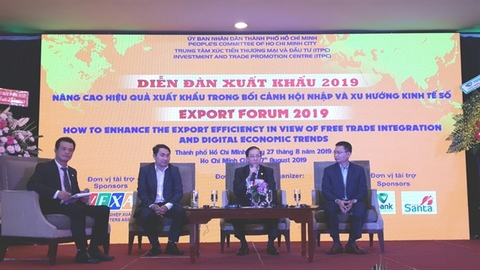
Exports by HCM City companies in the first half of the year topped US$19.6 billion, a 9.2 per cent increase year-on-year, according to the city People’s Committee. – VNA/VNS Photo
The 2019 Export Promotion Forum held in HCM City on August 27 discussed the strengthening of trade promotion to enhance production and exports by city businesses.
Pham Thiet Hoa, director of the HCM City Investment and Trade Promotion Centre (ITPC), said the forum discussed new ways of export promotion to align with current global market approaches and diversify promotional activities.
The export structure of Vietnamese goods had seen positive changes in the past few years, with a fall in the export of raw materials and increase in processed goods, enabling the country to participate in the global production and supply chains, he said.
Experts shared their insights into world market trends and issues Vietnamese companies should focus on to access and expand markets including through e-commerce and digital platforms.
To tap into the Southeast Asian market, Hoa said Vietnamese exporters should engage in more trade promotions and market surveys, and strengthen linkages with enterprises in target markets.
Exporters should also study prices, consumer tastes and trends in other markets, and have labels and packaging in English and the local language, Hoa said.
To meet the requirements of the ASEAN market, enterprises should also build brands, use technology in production and improve designs, Hoa said.
In markets such as the US, the EU, Japan, and South Korea, in addition to general global standards, exporters should also be prepared to face technical barriers that could change unexpectedly, experts said.
Last year the US was Viet Nam’s largest export market with shipments worth US$39 billion, 12.8 per cent up from 2017, followed by the EU with $34.9 billion, up 9.9 per cent, and China with $32.1 billion, up 21.3 per cent.
Export challenges
Le Cong Tri, an economist, said in the logistics sector Vietnamese enterprises only accounted for 25 per cent of business.
"Most are small in size, have unstable operations, poor customer service, and boast a low level of innovation," he said.
More than 90 per cent of Vietnamese enterprises in all sectors are small or medium-sized, with only 21 per cent of them able to supply goods and services to foreign buyers, according to Tri.
Global consumption trends have also changed. Consumers are increasingly paying attention to environmental factors when buying products. – VNS